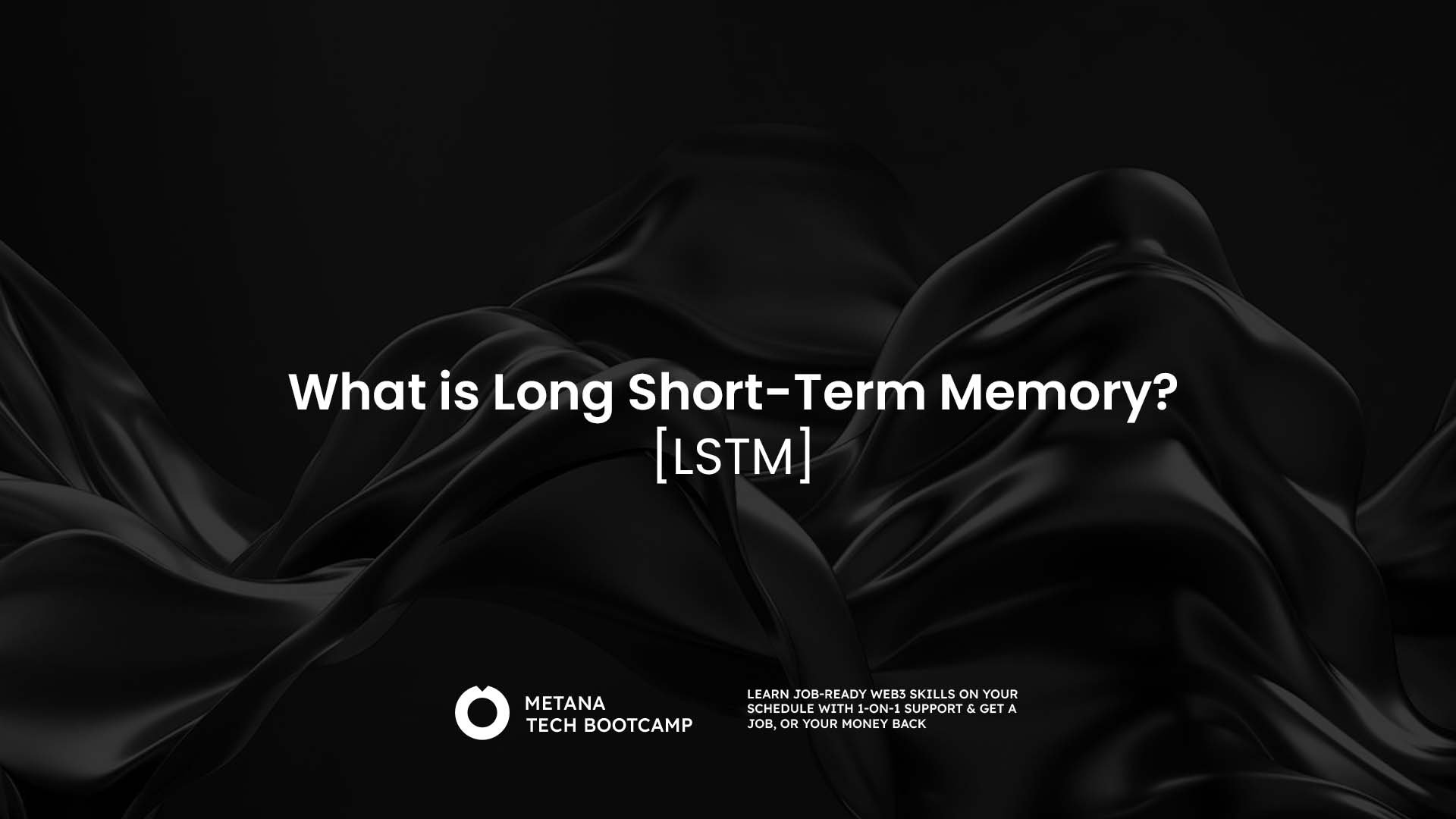Long Short-Term Memory (LSTM) networks are a type of Recurrent Neural Network (RNN) architecture that has revolutionized the field of sequence modeling. Traditional RNNs struggle to capture long-term dependencies in data while LSTM networks are equipped with a specialized memory cell that allows them to effectively learn and remember information over extended periods. This unique capability has made LSTM networks indispensable for a wide range of applications involving sequential or time-series data, such as natural language processing, speech recognition, and financial forecasting.
This article provides a deep understanding on LSTM networks and how they are used to address the challenges associated with learning long-term dependencies in sequential data. Understanding the practical aspects of implementing LSTMs is equally crucial for utilizing their full potential in real-world applications.
Understanding LSTM Networks
LSTM networks are designed to address the limitations of the traditional RNNs in handling long term dependencies in sequential data. One of the key innovations of LSTM networks is their ability to mitigate the vanishing gradient problem by introducing a more sophisticated memory unit, often referred to as a cell. An LSTM cell contains three key components which are input, output and forget gates. These gates control the flow of information allowing LSTMs to selectively update or reset information stored in the memory cells, enabling the network to retain relevant data and ignore irrelevant inputs.
- Cell State
- This serves as the memory of the LSTM, allowing information to flow unchanged across time steps. This helps the network maintain long-term dependencies more effectively.
- Input Gate
- The input gate controls what new information will be added to the cell state. It consists of two parts, the input modulation gate and the input gate itself. The input modulation gate decides which values to update, while the input gate determines how much of this information should be written to the cell state.
- Output Gate
- The output gate decides which information will be passed to the next hidden state. It uses the current input and the previous hidden state to filter the information and produce the next hidden state.
- Forget Gate
- The forget gate determines which information from the cell state should be discarded. It takes the current input and the previous hidden state, passes them through a function, and produces a value between 0 and 1. A value closer to 0 means “forget this information,” and a value closer to 1 means “keep this information.”
As a result, LSTMs are particularly effective at handling tasks with complex dependencies and variable sequence lengths, such as machine translation and video analysis, where the network must learn to prioritize and contextualize information dynamically over time.

The Problem with Traditional RNNs
A Recurrent Neural Network (RNN) is a type of artificial neural network designed to recognize patterns in sequences of data, such as time-series, text, or speech. However, traditional RNNs struggle with the issue of vanishing and exploding gradients during training. When back-propagating through many time steps, gradients can either shrink to zero (vanishing gradient problem) or grow exponentially (exploding gradient problem), making it difficult for the network to learn long-term dependencies. This makes it challenging for RNNs to remember information from earlier in the sequence.
The LSTM was designed to address this limitation and effectively handle long-term dependencies in sequential data.
Applications of LSTM Networks
LSTM networks have become a cornerstone in many fields due to their ability to effectively capture and learn from complex temporal patterns in sequential data. Following are some common applications of LSTM networks, showcasing their versatility and impact across various domains.
Natural Language Processing
LSTM networks excel at handling sequential dependencies in language data, making them suitable for a variety of Natural language Processing tasks. They are usually used in language modeling, which predicts the next word in a phrase, as well as machine translation, helping in the accurate conversion of text from one language to another. LSTMs are also utilized in text generation, allowing applications such as chatbots and content creation tools to generate meaningful and contextually relevant text while replicating human-like writing patterns.
Speech Recognition
LSTM networks play an important role in speech recognition systems because they accurately mimic the temporal dynamics of spoken language. They can tell between tiny differences in speech patterns, which is necessary for accurately transcribing spoken words into text. This makes them an important component of voice-controlled applications, virtual assistants, and automated transcription services, as it improves their ability to understand and process natural human speech in real time.
Time-Series Prediction
Time-series prediction is another area where LSTM networks excel, as they can learn from prior data and generate accurate predictions about future patterns. They are widely used in financial forecasting, such as predicting stock prices or economic indicators, and demand forecasting for supply chain management. By capturing long-term dependencies and trends in data, LSTMs allow organizations to make informed decisions based on accurate forecasts.
Music Composition
LSTM networks have also been used creatively in music composition. They can be trained on musical sequences to produce new compositions that adhere to the stylistic patterns of the training data. This has created new opportunities in the field of digital music creation, enabling for the development of AI systems capable of composing original pieces of music, assisting artists in their creative processes.
Advantages of LSTM Networks
LSTM networks have become a popular choice in the field of machine learning due to their unique architecture, which allows them to effectively model complex temporal dependencies. Following are some of the key advantages of LSTM networks that contribute to their widespread use across various applications.
| Advantage | Description |
|---|---|
| Ability to Learn Long-Term Dependencies | LSTM networks can effectively capture information from long sequences, making them suitable for tasks that require remembering information over extended periods. |
| Robustness to Noise | LSTM networks are relatively robust to noise in the input data, allowing them to maintain performance even with imperfect or noisy data inputs. |
| Versatility | LSTM networks are versatile and can be applied to a wide range of tasks and domains, including natural language processing, time-series prediction, and more. |
Practical Considerations for Implementing LSTMs
When working with LSTM networks, several key factors must be considered to optimize performance and ensure effective learning. First, proper data preprocessing is crucial, which includes normalizing input features to a consistent range, padding or truncating sequences to ensure uniformity, and batching sequences of similar lengths for efficiency.
Choosing the right hyperparameters, such as the number of layers, hidden units, and dropout rate, significantly impacts model performance. Training strategies like gradient clipping, learning rate scheduling, and utilizing GPUs can also help manage the computational intensity of training. Additionally, handling overfitting through regularization techniques, early stopping, and data augmentation is important for a better model performance.
Conclusion
LSTM networks have transformed the field of sequence modeling by overcoming the limitations of traditional RNNs. Their capacity to understand long-term dependencies and versatility have made them an effective tool for a wide range of applications. Despite their complexity and computing needs, LSTMs remain an effective tool for a variety of applications, including language processing and financial forecasting. As deep learning advances, LSTMs and their derivatives are likely to remain an important aspect of the neural network toolkit.
FAQs:
What is Long Short-Term Memory (LSTM)?
- LSTM is a specialized recurrent neural network (RNN) architecture designed to retain information over long sequences, making it ideal for time-series data.
How does LSTM differ from standard RNNs?
- LSTM can remember long-term dependencies using gates that control the flow of information, while standard RNNs struggle with vanishing gradients.
Where is LSTM commonly used?
- LSTMs are used in tasks like speech recognition, language modeling, and time-series prediction, where understanding sequence data is crucial.
What are the key components of an LSTM?
- LSTM networks consist of forget, input, and output gates, each controlling how information is stored or discarded in the memory cell.
Why are LSTMs important in deep learning?
- LSTMs address the limitations of traditional RNNs, enabling more effective learning from sequential and time-dependent data in many AI applications.








